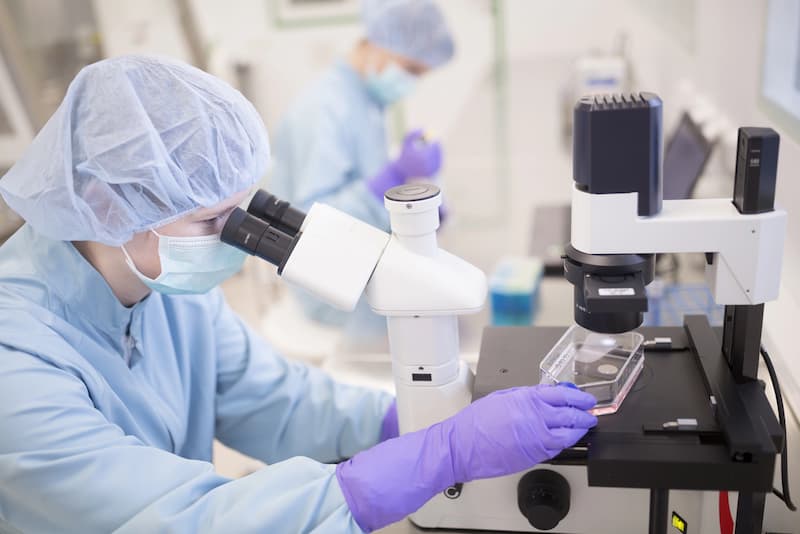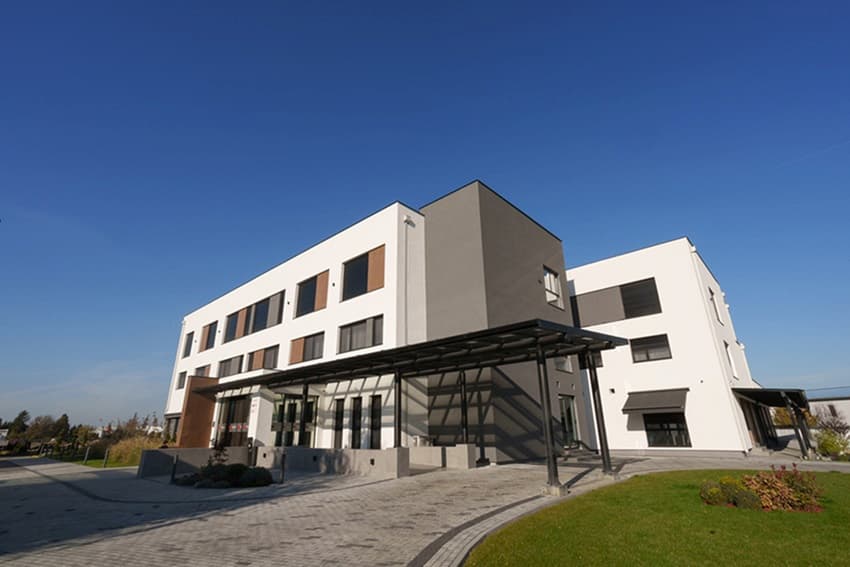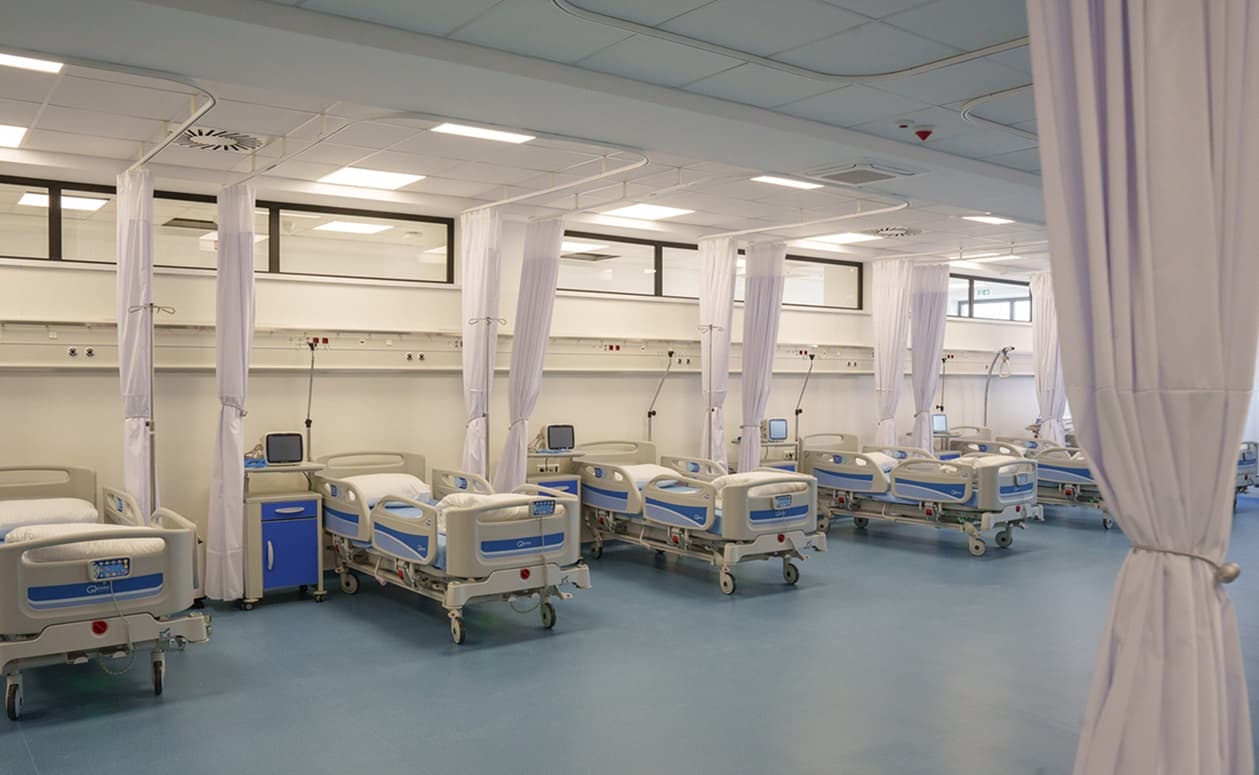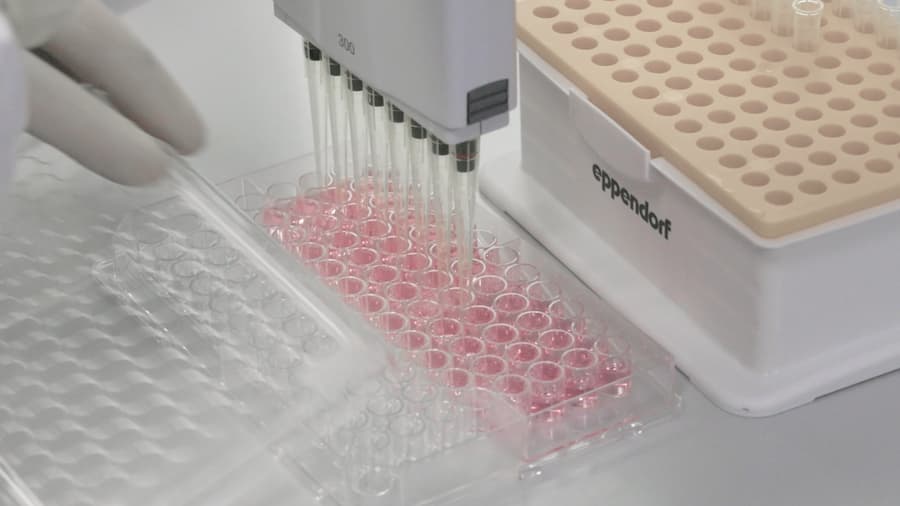Stem cell therapy, a groundbreaking approach leveraging the body’s regenerative potential, has sparked hope for treating diverse conditions. While stem cell therapy success rate varies widely—from pain relief in orthopedics to experimental trials in neurology—the field remains dynamic.
Recent studies demonstrate significant progress and a deeper mechanistic understanding of stem cell therapy, anchoring the field in increasingly evidence-based practices. Discoveries in research have shown both promising outcomes, such as improved functional recovery from neurological disorders and orthopedic injuries and enhanced tissue regeneration, and ways to prevent undesirable side effects, such as tumorigenesis and immune-mediated complications. This knowledge has helped to refine safety protocols and patient selection criteria.
In this article, we will look at studies that can help patients navigate the changing treatment landscape and answer the question, “Is stem cell therapy effective and safe for me?”
Get a free online consultation
Short on time? Get clear, expert answers fast—book your free online consultation with our medical advisor today.

Medical Advisor, Swiss Medica doctor
What Does “Success Rate” Really Mean in Medicine?
In a medical context, “success rate” refers to the percentage of patients achieving desirable goals, such as symptom reduction, disease remission, or improved quality of life.
For stem cell therapy, success rate might mean reduced joint pain, restored mobility, or halted disease progression. However, metrics vary by condition, making direct comparisons challenging.
How Doctors Measure Stem Cell Therapy Success
Clinicians assess higher stem cell therapy success rate through patient-reported outcomes, imaging results, biomarkers, and long-term follow-ups. By combining clinical data, patient feedback, and advanced diagnostics, doctors can get a clearer picture of the success rate of stem cell transplants, helping guide safer and more effective treatments.

Key Methods for Measuring Stem Cell Therapy Success Rate
| Patient-reported outcomes | • Pain reduction (e.g., using pain scales) • Improved quality of life • Better daily functioning |
| Imaging results | MRI or X-rays can show: • Tissue regeneration • Reduction in inflammation • Improved joint or bone structure |
| Biomarkers | Blood tests or tissue samples may reveal: • Decreased inflammation markers • Enhanced cell regeneration indicators |
| Long-term follow-up | Monitoring patients over months or years helps determine the durability of results and overall treatment effectiveness. Short-term improvements are encouraging, but long-term follow-ups are essential to: • Ensure sustained benefits • Track any delayed side effects • Refine treatment protocols for future patients |
The Latest Safety Studies: What Is the Success Rate of Stem Cell Therapy
As with any evidence-based science, building a strong foundation takes time. Over the past decade, a growing number of studies have demonstrated the safety and effectiveness of stem cell treatments, particularly highlighting the advantages of mesenchymal stem cells (MSCs).
For example, a review of 62 clinical trials involving more than 3,500 patients found that MSC treatment is generally safe. Most reported side effects—such as mild fever, fatigue, or difficulty sleeping—were temporary and not severe. Importantly, no serious adverse events were observed across the studies.
Stem Cell Therapy: Success Rates Across Conditions
Reproductive health, neurological disorders, and orthopedic issues are just a few of the many conditions that have shown improvement after stem cell treatment. But how effective is stem cell therapy in reality? The answer depends on the condition being treated. Let’s explore what the latest research reveals.
Neurological Disorders: Success rate of stem cell therapy for Parkinson’s disease
For neurological conditions like Parkinson’s disease, early studies suggest improvements in motor symptoms such as walking, speaking, and facial expressions. Stem cell therapy for Parkinson’s disease demonstrates a range of strong results:
- A group of 53 patients showed a safe and positive response to stem cell treatments from bone marrow or adipose tissue.
- In another case, 4 out of 5 patients maintained stable symptoms after therapy.
- 20 Parkinson’s patients reported better scores in areas like cognitive function, mood, and speech.
Orthopedic Conditions
The success rates of stem cell therapy for knees are among the highest in the treatment of joint and bone conditions, with studies showing a 70–80% improvement in pain reduction and joint function.
- In a study of 329 people with knee problems, most avoided knee replacement surgery for at least two years.
- Among those with severe issues, 63 out of 70 were able to maintain an active lifestyle without surgery.
Though some patients experienced temporary swelling or discomfort, the treatment was generally regarded as safe and effective when compared to traditional methods.
Autoimmune Diseases
For conditions like multiple sclerosis (MS), stem cell therapy has shown potential in helping to “reset” the immune system, with growing interest in the stem cell transplant for MS success rate as studies continue to report encouraging outcomes in reducing disease activity and slowing progression.
- A study involving 24 people with progressive MS, unresponsive to standard treatments, found that 22 of them stabilized or improved over four years.
- The therapy appeared to reduce hidden brain inflammation and even start repairing nerve coverings—all without serious side effects.
Reproductive System Diseases
Stem cell therapy is also showing early potential in treating reproductive system diseases and infertility.
Peyronie’s Disease (PD)
A 2017 study using adipose-derived stem cells (ADSCs) showed improvements in penile curvature, plaque size, and erectile function. These stem cells are widely used due to their easy extraction and regenerative properties. Multiple studies suggest ADSCs may help prevent or treat fibrotic diseases like PD.
Fertility Support
Recent research highlights the potential of various types of mesenchymal stem cells (MSCs)—including umbilical cord-derived (UC-MSCs) and bone marrow-derived (BM-MSCs)—in treating female infertility:
- UC-MSCs are easy to collect, safe, and effective in restoring ovarian function by reducing apoptosis and inflammation, promoting angiogenesis, and aiding endometrial repair. They have shown positive results in early human trials.
- BM-MSCs have demonstrated anti-inflammatory and regenerative effects in ovarian tissue, especially in models of PCOS and chemotherapy-induced ovarian damage.
How Effective Is Stem Cell Therapy for Erectile Dysfunction?
Clinical studies have shown that MSCs hold significant promise for treating erectile dysfunction (ED) of various causes, including diabetes, post-prostatectomy nerve injury, and vascular insufficiency. Key clinical findings:
| Adipose-derived stem cells (ADSC) | In a 2015 study, 4 out of 6 diabetic patients regained spontaneous erections within one month, with effects lasting up to a year. Another study from Denmark confirmed significant improvements in erectile function at both 6 and 12 months post-treatment, with no serious side effects. |
| Umbilical cord stem cells (UCSC) | In a trial involving diabetic men aged 57–83, most patients recovered morning erections within a month, and results lasted at least six months. A later trial confirmed safety and improved penile blood flow at 6-month follow-up. |
| Bone marrow-derived stem cells (BMSC) | A long-term study (mean follow-up of 62.1 months) showed that intracavernous injection of BMSC was safe and effective, with initial improvements in erectile function and sexual satisfaction. Although a slight decline occurred after the first year, no adverse effects were reported. |
The clinical success rate highlights the positive outcomes of stem cell therapy for erectile dysfunction:
- Up to 67% of patients in trials experienced restored erectile function.
- Sustained improvement in sexual function was observed at 6–12 months.
- No serious adverse events were reported across studies, confirming a strong safety profile.
Autism
The stem cell therapy success rate for autism is increasing with approved results. A review of 11 studies involving 461 patients reported significant improvements in areas such as social interaction, motor function, and behavioral skills. Notably, the most marked progress was observed in the “relationship to people” and “body usage” categories. Although some mild side effects like fever and hyperactivity were reported, no serious safety concerns were identified.
Mesenchymal stem cell therapy for autism spectrum disorder (ASD) showed improvements in patients’ well-being and cognitive abilities, according to research conducted by our doctors at Swiss Medica, a stem cell clinic in Serbia.

How Patient Age and Health Affect Results
The success rate of stem cell transplants can vary greatly depending on a patient’s age and overall health. While stem cells have powerful regenerative potential, individual biological factors play a major role in determining how well the body responds to treatment.
| Factor | Impact on Stem Cell Therapy |
| Younger age | Often associated with better outcomes due to stronger cell activity and faster healing. |
| Good overall health | Enhances the body’s ability to accept and integrate stem cells effectively. |
| Chronic conditions | If a patient has a range of chronic conditions, the effect of the therapy may be less pronounced. |
| Weakened immune system | May increase the risk of complications and limit regenerative response. |
At Swiss Medica in Serbia, we do not accept every patient for stem cell treatment. First, we carefully review each individual’s medical history and current health condition. Based on this evaluation, our medical advisors provide clear information about the potential outcomes—ensuring you can make a well-informed decision.
Get a free online consultation
To find out if you’re eligible for stem cell therapy, leave your details here. One of our medical advisors will contact you to schedule a free online consultation.

Medical Advisor, Swiss Medica doctor
Can Stem Cell Therapy Fail? And Why It Happens
While the stem cell therapy success rate is high, it is important to note that it, like any other medical treatment, is not a guaranteed solution. Understanding the reasons behind unsuccessful outcomes helps manage expectations and improve future success rates.
Common Reasons for Stem Cell Therapy Failure
Certain individual factors may affect how well the therapy works. However, the examples below are not definite contraindications—each case should be carefully evaluated to assess the chances of success.
| Pre-existing health conditions | Poor general health and multiple comorbidities may hinder the body’s ability to respond to therapy. |
| Advanced cases | When the case is extremely advanced, the chances of success are lower—stem cell therapy isn’t a miracle cure. |
Before undergoing stem cell therapy, patients should consult with a regenerative specialist to ensure that they are suitable candidates.
Common Myths About Success Rate of Stem Cell Transplant
Along with the excitement, several myths persist—particularly about the adult stem cells success rates, or MSCs. They are often confused with other types of stem cells and are mistakenly seen either as a miracle cure or, conversely, as a highly risky treatment. Understanding the truth behind these misconceptions is essential for making informed decisions.
Myth #1: “Stem Cell Therapy Is a Cure-All”
Reality: While stem cells have shown promising results, they are not a universal solution. As previously stated, the effectiveness of stem cell treatments is determined by the patient’s condition, overall health, and pre-existing illnesses. It’s important to view stem cell therapy as a treatment option, not a guaranteed cure.
Myth #2: “Stem Cells May Worsen My Condition”
Reality: Like any medical procedure, stem cell therapy carries potential risks. These may include mild side effects such as fever, fatigue, or swelling.
Experienced clinics that follow rigorous protocols can significantly reduce these risks.
Comparing Adult Stem Cell Success Rates to Other Treatments
Stem cell therapy often outperforms traditional treatments in various areas, including orthopedics—offering faster recovery compared to surgery—and in managing autoimmune conditions.
| Condition | Stem Cell Therapy | Traditional Treatment | Comparison |
| Orthopedic | 70–80% improvement in joint pain and mobility | Surgery (e.g., knee replacement) | Stem cell therapy offers faster recovery and less invasiveness. |
| Autoimmune | Stabilization of resistant MS cases | Immunosuppressive drugs | Stem cells may help to reduce exaggerated activity of the immune system with fewer relapses. |
Long-Term Results and What We Know So Far
Most studies run for 2 to 5 years, and during that time, many patients report lasting improvements in their symptoms and overall quality of life. However, in some cases, results are limited—often due to using the wrong therapy or treatment approach. Research is ongoing, and as new, approved findings become available, we’ll be sure to share them.
The Role of Clinic Experience and Technology in Stem Cell Therapy Success Rate
The success of stem cell therapy isn’t solely dependent on the type of cells used—it also heavily relies on the clinic’s experience and the technologies they employ. Clinics that combine expertise with cutting-edge techniques tend to achieve better outcomes for their patients.
Key Factors That Boost Success Rate of Stem Cell Transplant
Since 2011, Swiss Medica has treated over 10,000 patients, achieving positive outcomes in nearly 80% of cases. Our high success rate is driven by a strong commitment to medical innovation, strict safety protocols, and a patient-centered approach.
Here’s what sets our technology and expertise apart.
Advanced Cell-Processing Techniques
Our stem cell clinic and hospital offer precision-driven therapies by combining state-of-the-art facilities with advanced medical technologies. At the heart of our success is our in-house laboratory, which forms the backbone of our treatments. This lab produces more than 31 biomedical products, including stem cells, exosomes, macrophages, and platelet-rich plasma (PRP).
Thanks to this fully integrated approach, we maintain complete control over the entire treatment process—from sourcing and processing to delivery—ensuring exceptional quality, reliability, and patient outcomes.
The Swiss Medica hospital is known for its high-quality stem cell products and its pleasant, relaxing rooms and services.
Strict Protocols and International Standards
We adhere strictly to European medical standards and undergo regular inspections to ensure compliance. Every treatment is backed by rigorous purification and quality control, guaranteeing safety, potency, and consistency.
Highly Experienced Medical Teams
Our doctors are specialists with advanced training in regenerative medicine and stem cell applications. We tailor each therapy plan to the patient’s individual condition and health needs.
How to Increase Your Chances of a Successful Outcome
The effectiveness of stem cell treatment starts with making informed choices and following key steps throughout the treatment process:
1. Choose the Right Clinic
- Look for clinics that publish real reviews from patients.
- Ensure they use advanced cell-processing techniques to minimize risks and improve efficacy.
2. Follow Medical Guidelines
- Follow all medical recommendations from a regenerative medicine specialist.
- Maintain a healthy lifestyle, including proper nutrition and physical activity, to support recovery and overall results.
3. Stay Engaged in Follow-Up
- Attend all scheduled check-ups and evaluations to track progress.
- Report any side effects early, so your medical team can respond promptly and adjust your care if needed.
How to Choose the Right Clinic
The effectiveness of stem cell treatment varies from person to person, and it may not be the right solution for everyone. Here are our recommendations for what to look for when choosing a clinic.
| What to Look For | Why It Matters |
| Transparent success rates and real patient cases | Builds trust and credibility |
| Avoids exaggerated claims or “miracle cure” language | Indicates ethical standards and realistic outcomes |
What to Ask the Clinic Before Starting Stem Cell Therapy
Before starting any stem cell treatment, it’s essential to ask the right questions. This not only helps you make an informed decision but also ensures the clinic you’re considering is qualified, transparent, and aligned with your health goals. Here are some examples:
- “Is stem cell treatment successful in my case?” Look for a personalized assessment that is tailored to your specific diagnosis, health history, and treatment goals, rather than generic assurances.
- “Can you share patient reviews?” You can see how a clinic is safe and takes care of its patients by looking at actual data,, or testimonies that demonstrate consistent outcomes over time.
- “Are there standard protocols for different conditions, or is each therapy tailored to the individual?” Instead of one-size-fits-all programs, a clinic should provide individualized treatment plans created by regenerative medicine experts.
- “Is follow-up care included? What happens if complications arise?” Look for clear aftercare plans and transparency about any additional costs. A good clinic should offer scheduled check-ups, dedicated post-treatment support, and defined protocols for managing side effects or unexpected issues.
Contact us
Schedule a free online consultation with our medical advisor to get answers to all of your questions without feeling pressured. We are here to help you determine whether stem cell therapy is right for you.

Medical Advisor, Swiss Medica doctor
While price can reflect the quality of facilities and services, higher costs do not guarantee a higher stem cell transplant success rate in the UK, USA, or other European countries. Some clinics charge premium prices for unproven or experimental methods, making it essential for patients to do their homework before committing to treatment.
| Cost Factor | Impact on Success |
| High price for advanced facilities | Often associated with high taxes and strict regulations. These factors do not necessarily ensure more effective stem cell therapy. |
| Transparent pricing with evidence-based care | More likely to ensure reliable results and improved patient outcomes |
At Swiss Medica’s new hospital in Belgrade, stem cell treatment costs range from €7,000 to €31,000*, depending on the condition’s severity and the number of stem cells required. These prices are significantly lower than the European average, which often exceeds €50,000, and provide a cost-effective alternative for high-quality care. In comparison, treatment costs in the UK can range between £20,000 and £50,000, depending on the clinic and treatment protocol. However, stem cell transplant success rate in the UK is not higher than in other countries.
*The prices mentioned are indicative and subject to change based on individual factors, including the condition’s severity and the number of stem cells needed. Prices are valid as of January 2025
Frequently Asked Questions
1. What is the success rate of stem cell injections?
The success rate of stem cell therapy depends on both the condition being treated and the individual patient’s circumstances. For instance, orthopedic cases—such as knee or joint problems—often show a 70–80% improvement in pain relief and overall function.
2. Are there age limits?
There are no strict age limits for stem cell therapy. Even though the effects of treatment may take longer for older adults to manifest due to natural aging processes, many report improvements in mobility and a sense of mastery over their bodies.
3. Is it worth the cost?
Whether stem cell therapy is worth the cost depends on your individual case. Consider the potential long-term benefits—such as avoiding surgery or improving quality of life—against the risks and financial investment. It’s also important to ask about insurance coverage or payment plans that may help reduce out-of-pocket expenses. Always ensure the clinic offers transparent pricing and evidence-based care.
List of References:
Wang, Y., Yi, H. & Song, Y. The safety of MSC therapy over the past 15 years: a meta-analysis. Stem Cell Res Ther 12, 545 (2021). https://doi.org/10.1186/s13287-021-02609-x
Heris, R.M., Shirvaliloo, M., Abbaspour-Aghdam, S. et al. The potential use of mesenchymal stem cells and their exosomes in Parkinson’s disease treatment. Stem Cell Res Ther 13, 371 (2022). https://doi.org/10.1186/s13287-022-03050-4
Freitag, J., Wickham, J., Shah, K., & Tenen, A. (2022). Real-world Evidence of Mesenchymal Stem Cell Therapy in Knee Osteoarthritis: A Large Prospective Two-Year Case Series. Regenerative Medicine, 17(6), 355–373. https://doi.org/10.2217/rme-2022-0002
Petrou Panayiota , Kassis Ibrahim , Ginzberg Ariel , Halimi Michel , Yaghmour Nour , Abramsky Oded , Karussis Dimitrios. Long-Term Clinical and Immunological Effects of Repeated Mesenchymal Stem Cell Injections in Patients With Progressive Forms of Multiple Sclerosis. Frontiers in Neurology, Volume 12, 2021. https://www.frontiersin.org/journals/neurology/articles/10.3389/fneur.2021.639315
Dellis A, Papatsoris A. Stem cell therapy for the treatment of Peyronie’s disease. Expert Opin Biol Ther. 2017 Apr;17(4):407-413. doi.org/10.1080/14712598.2017.1295034
Saeed Y, Liu X. Mesenchymal stem cells to treat female infertility; future perspective and challenges: A review. Int J Reprod Biomed. 2022 Oct 10;20(9):709-722. doi.org/10.18502/ijrm.v20i9.12061
Pérez-Aizpurua, X.; Garranzo-Ibarrola, M.; Simón-Rodríguez, C.; García-Cardoso, J.V.; Chávez-Roa, C.; López-Martín, L.; Tufet i Jaumot, J.J.; Alonso-Román, J.; Maqueda-Arellano, J.; Gómez-Jordana, B.; et al. Stem Cell Therapy for Erectile Dysfunction: A Step towards a Future Treatment. Life 2023, 13, 502. https://doi.org/10.3390/life13020502
Akat, A., Karaöz, E. Cell therapies for autism spectrum disorder: a systematic review of clinical applications. Middle East Curr Psychiatry 30, 94 (2023). https://doi.org/10.1186/s43045-023-00363-9
MD, Pediatrician, Regenerative Medicine Specialist











